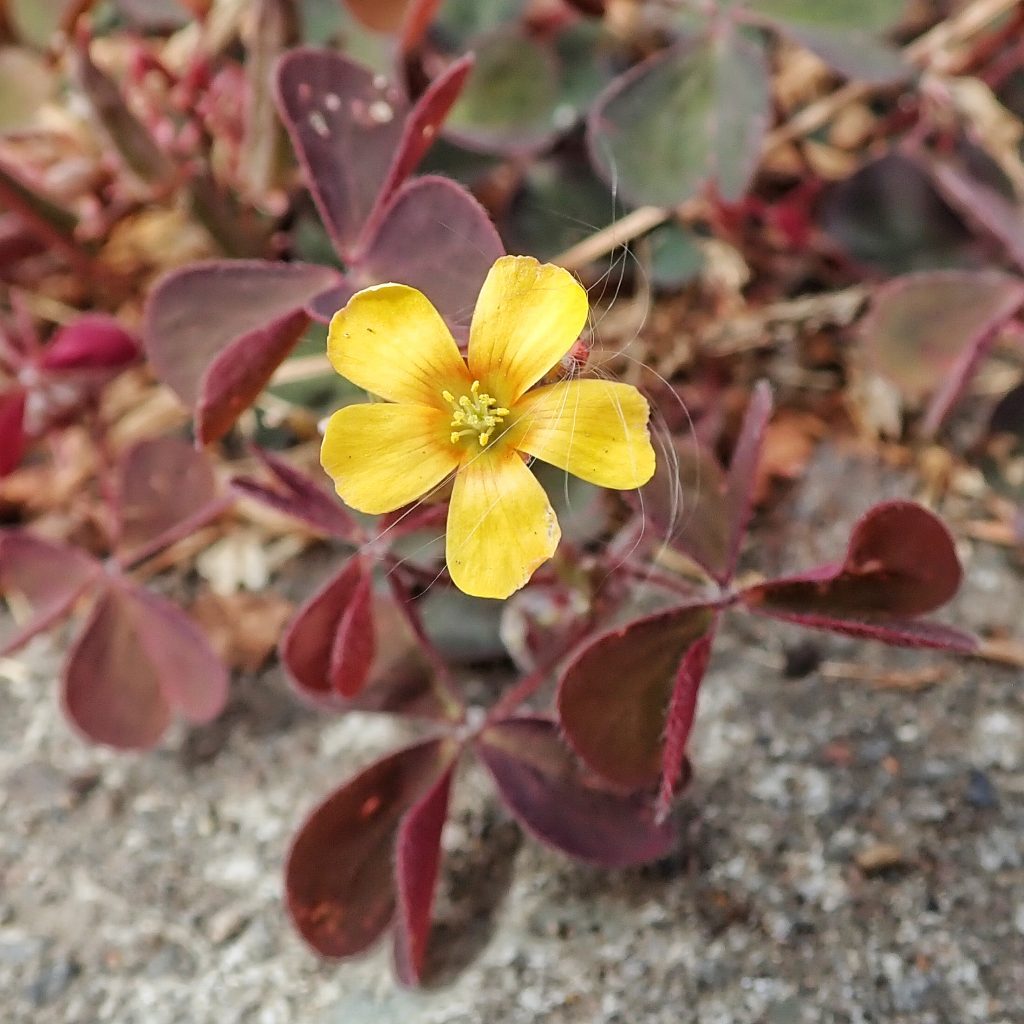
I know that many people really dislike Oxalis corniculata, but, as a non-gardener or lawn enthusiast, I’m rather fond of this pretty little plant with its cheerful yellow flowers and striking purplish leaflets. I might feel differently if I found it in a backwoods meadow, but I do encounter it alongside roads in relatively wild areas, and it doesn’t bother me there since it only seems to thrive in disturbed ground. It is not considered to be a noxious weed in the PNW. It is also interesting to note that, while virtually all of the Creeping Yellow Woodsorrel found in North America is from non-native stock (probably a Eurasian native, though it’s origins are obscure), there are populations along the Gulf Coast that grow in undisturbed ground and are thought to possibly be native.
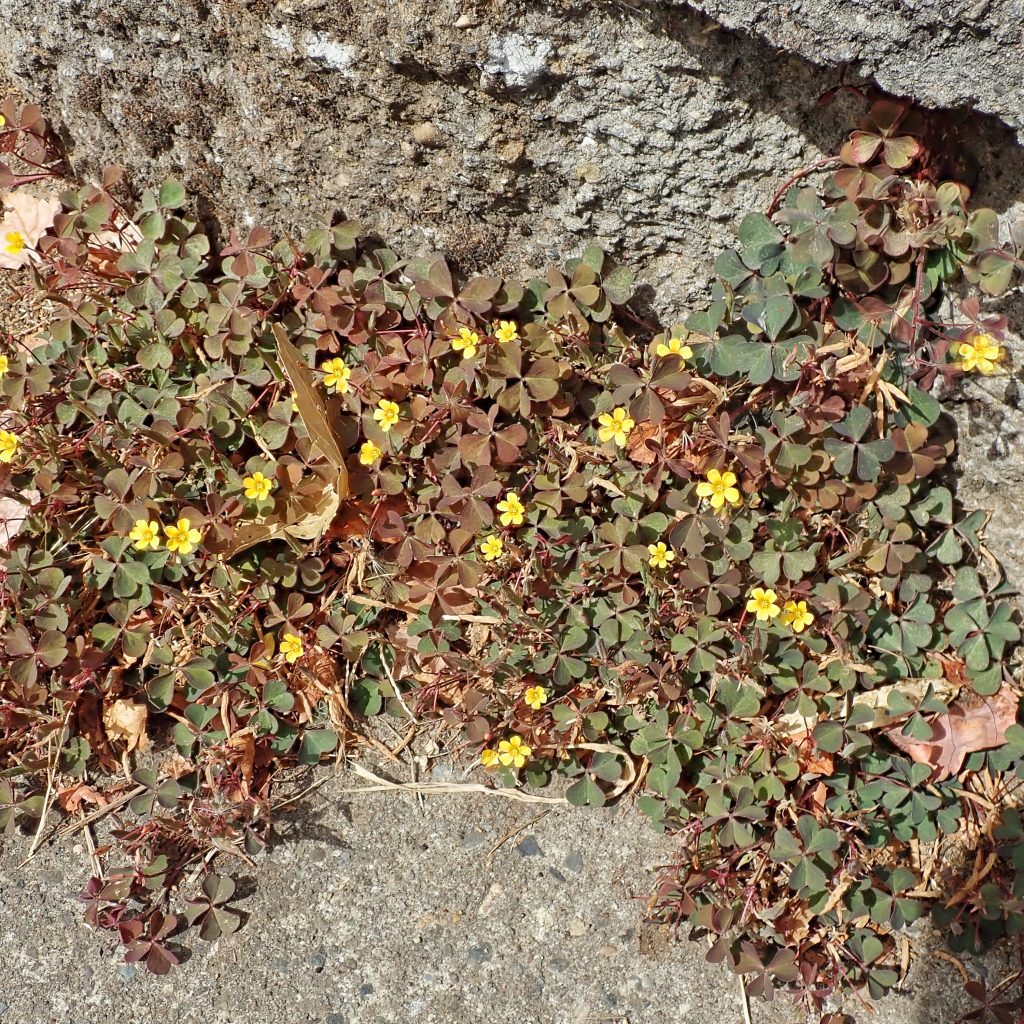
Because Oxalis corniculata has anti-inflammatory and anti-bacterial properties modern herbalists use parts of this plant to treat flu, fever, urinary tract infections. The leaves and flowers of creeping wood sorrel are used by modern foragers in salads and as a potherb to add a tangy, sour flavor. The leaves, though small, are available for much of the year, and are a source for calcium, phosphorus, iron, beta carotene (which our body converts to vitamin A), niacin, and vitamin C. They, and the flowers, also contain oxalates, which even in small doses can have adverse effects on people prone to rheumatism, arthritis, gout, or kidney stones. Larger quantities are harmful because the oxalates bind with calcium and prevent its absorption, which can lead to osteoporosis, brain disorders, and several other issues.
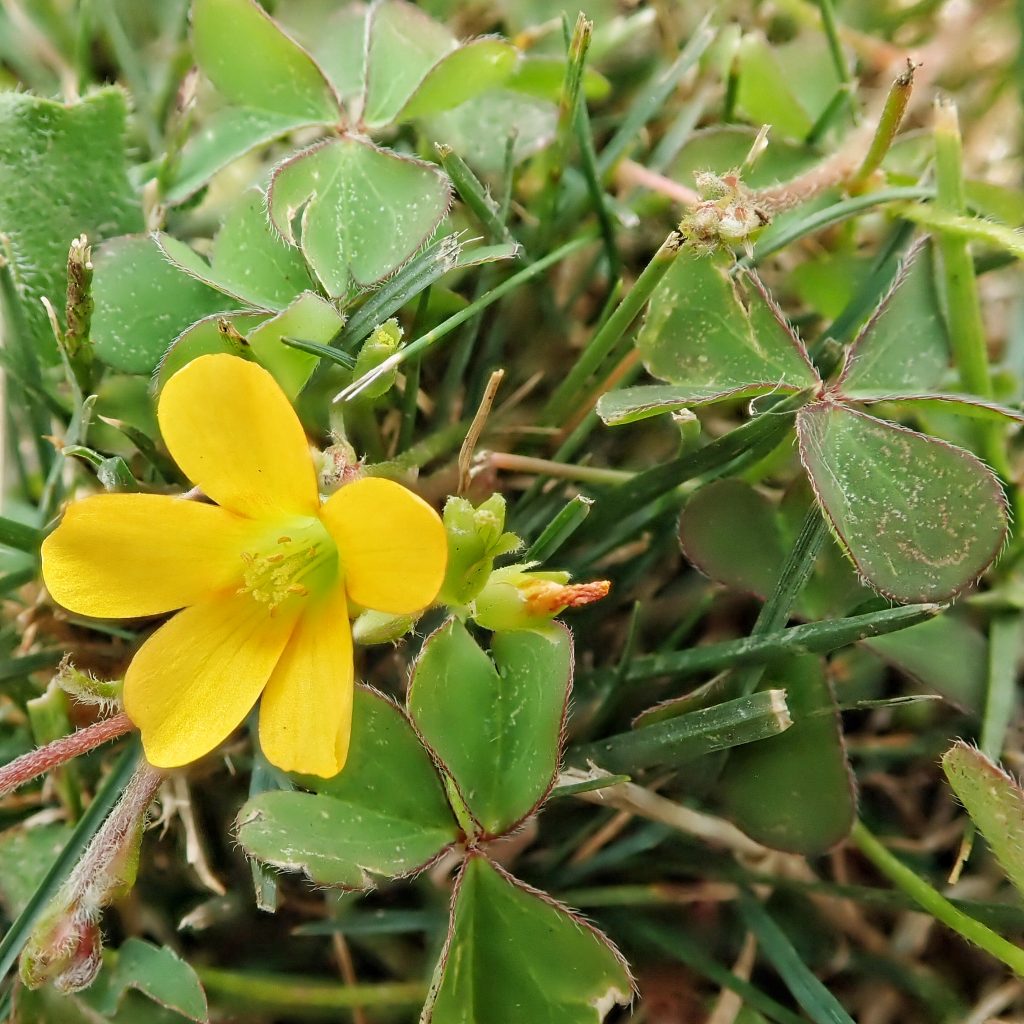
Despite the fact that this is an introduced species it has apparently been naturalized in North America for a very long time (first collected for botanical science in 1840) since there are many records of indigenous people using this plant. Besides those listed above, indigenous cultures used it to treat hookworms, nausea, blood disorders, and as a poultice for wounds. They also used the floral parts to make a yellow dye.
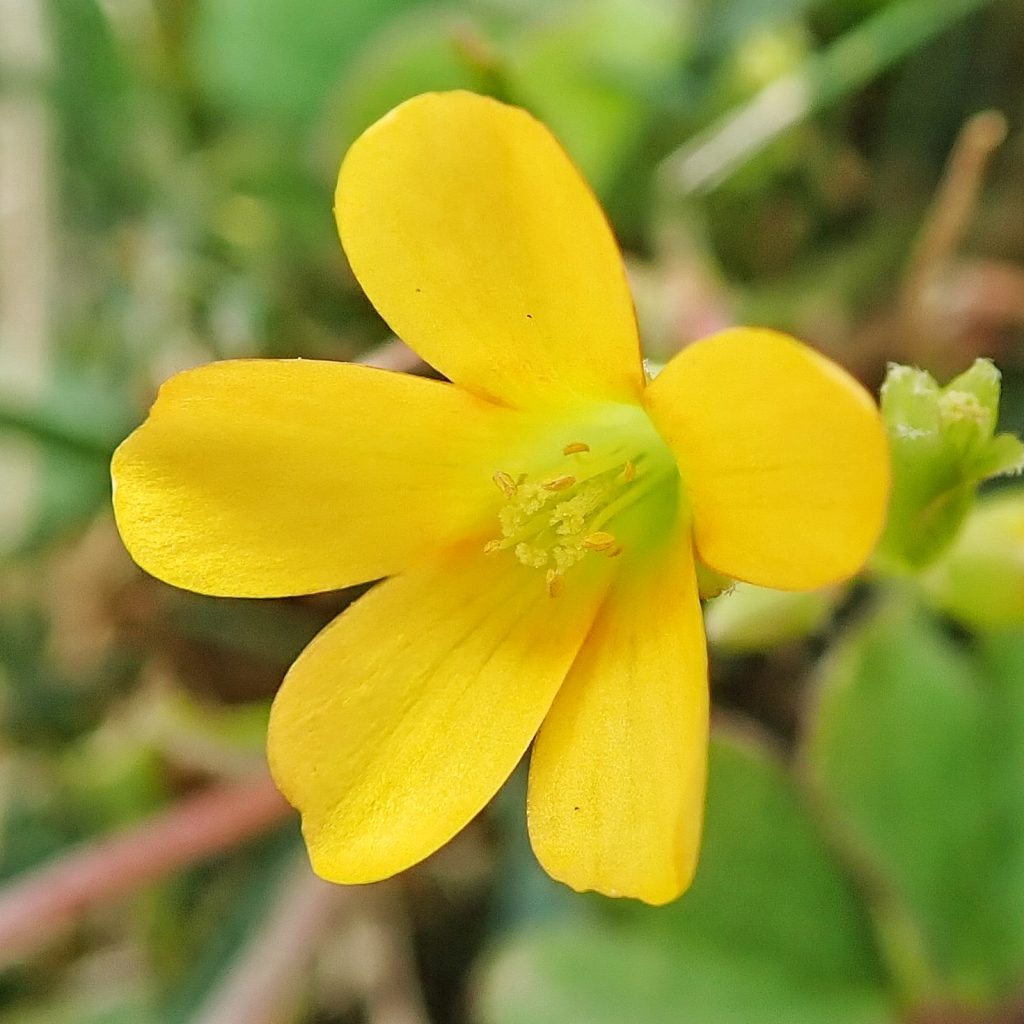
Description-Perennial plant, prostrate and creeping, with stolons that root at the nodes; stems hairless or with hairs not appressed; leaflets small (6-12mm), heartshaped and in groups of 3, deep green to reddish purple; flowers small (up to 12mm wide) yellow with red orange in the throat turning into pale reddish lines, in clusters of up to 7 flowers; seed pods long (up to 20mm) and horn shaped.
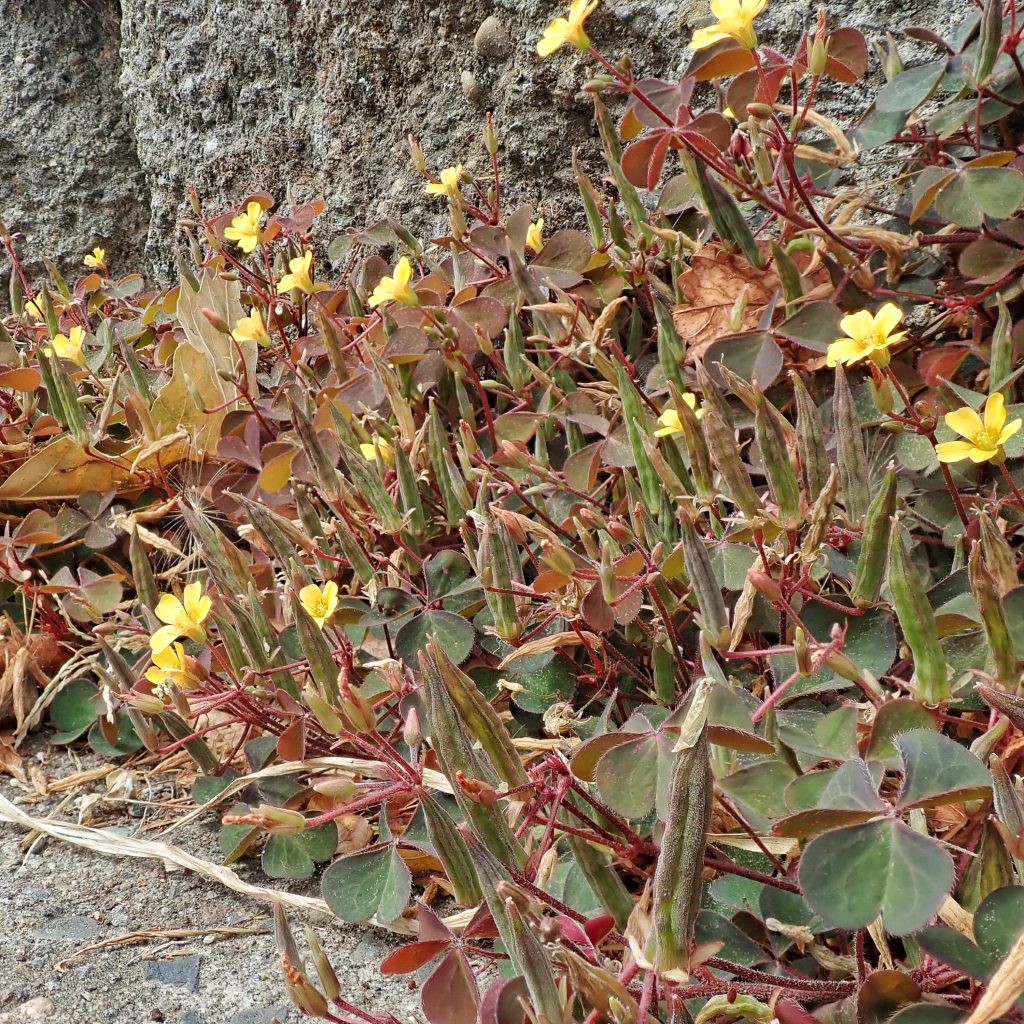
Similar species–O. suksdorfi has much larger flowers; O. stricta has leaflets larger than the flowers; O. dillenii has stems with appressed hairs all pointing one direction, and tends to be erect; other Oxalis sp. have white to light pink flowers.
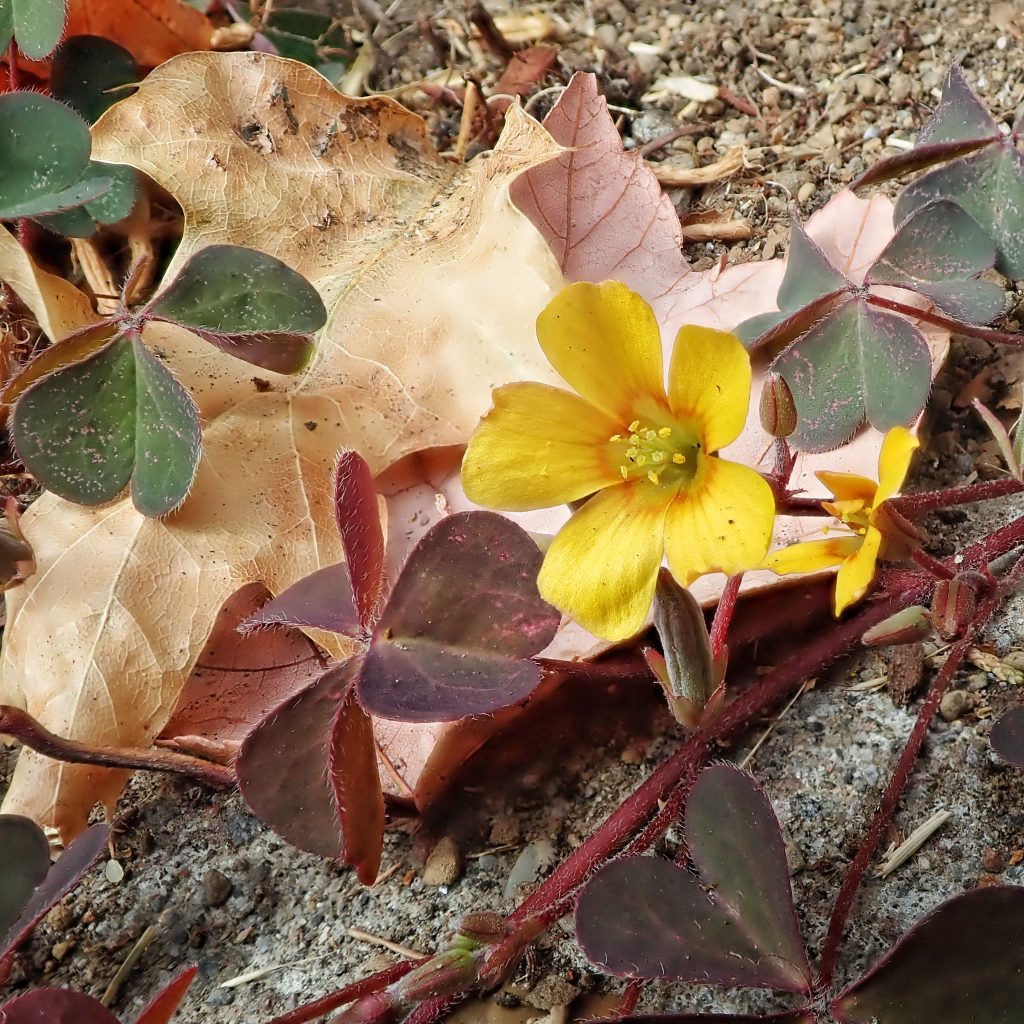
Habitat-Disturbed ground in open areas up to subalpine.
Range– Cosmopolitan; scattered throughout or region, most common in or near urban areas
Reproductive timing-Blooms May to October
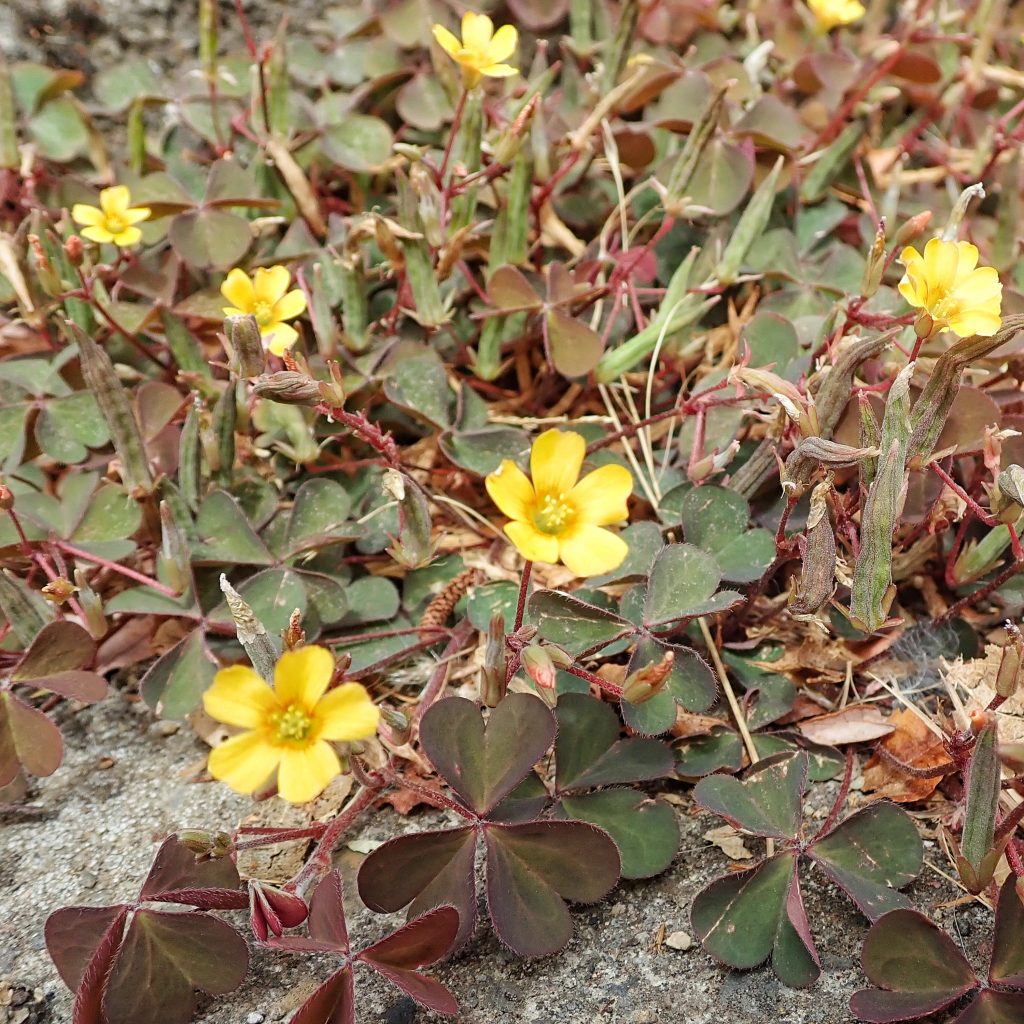
Eaten by-The moths Galgula partita and Trichodezia californiata may use this as a larval host; small numbers of syrphid flies, sweat bees, leaf cutter bees, carpenter bees, honey bees, and skipper butterflies, consume the nectar and pollen; Diabrotica undecimpunctata (spotted cucumber beetle) has been observed feeding on this plant, but then they eat almost everything that grows; The seeds are eaten by a wide variety of birds and small mammals, and rabbits and deer occasionally browse the foliage.
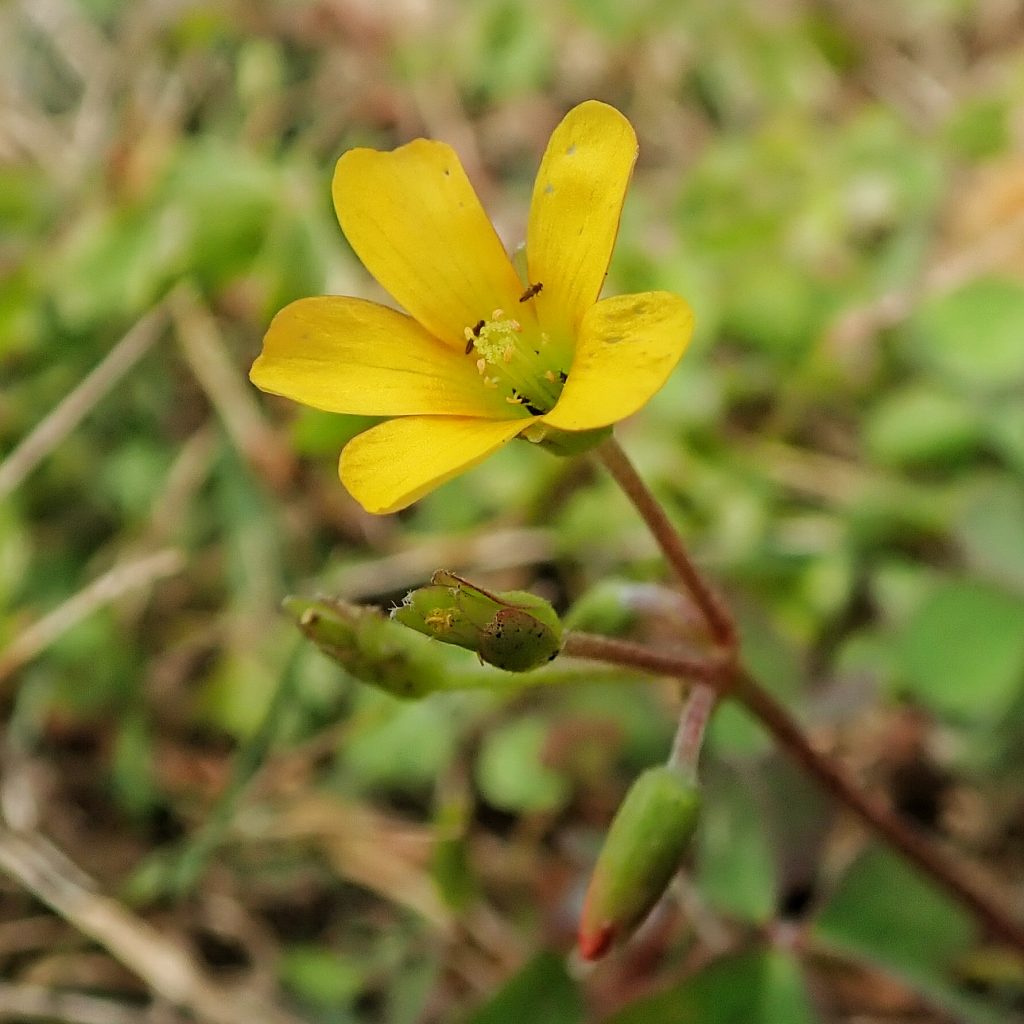
Etymology of names–Oxalis is from the Greek for ‘being sour/sharp’ and refers to the acidic taste of the juice of the plant. The specific epithet corniculata is from the Latin for ‘horn shaped’ and refers to the lengthy, cylindrical seed pod.
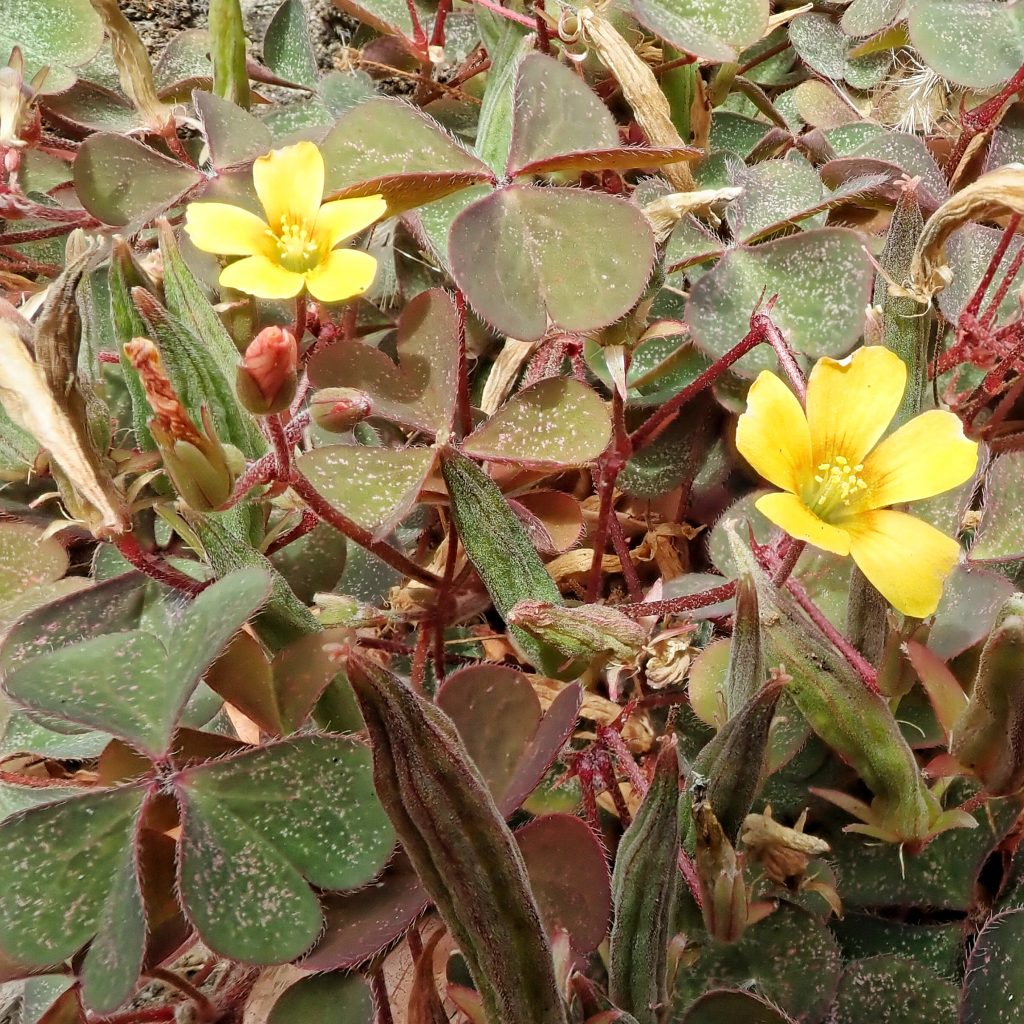
BRIT – Native American Ethnobotany Database
https://www.illinoiswildflowers.info/weeds/plants/cr_wdsorrel.html
https://www.cabi.org/isc/datasheet/38154
https://pfaf.org/user/plant.aspx?LatinName=Oxalis+corniculata
http://www.efloras.org/florataxon.aspx?flora_id=1&taxon_id=200012375
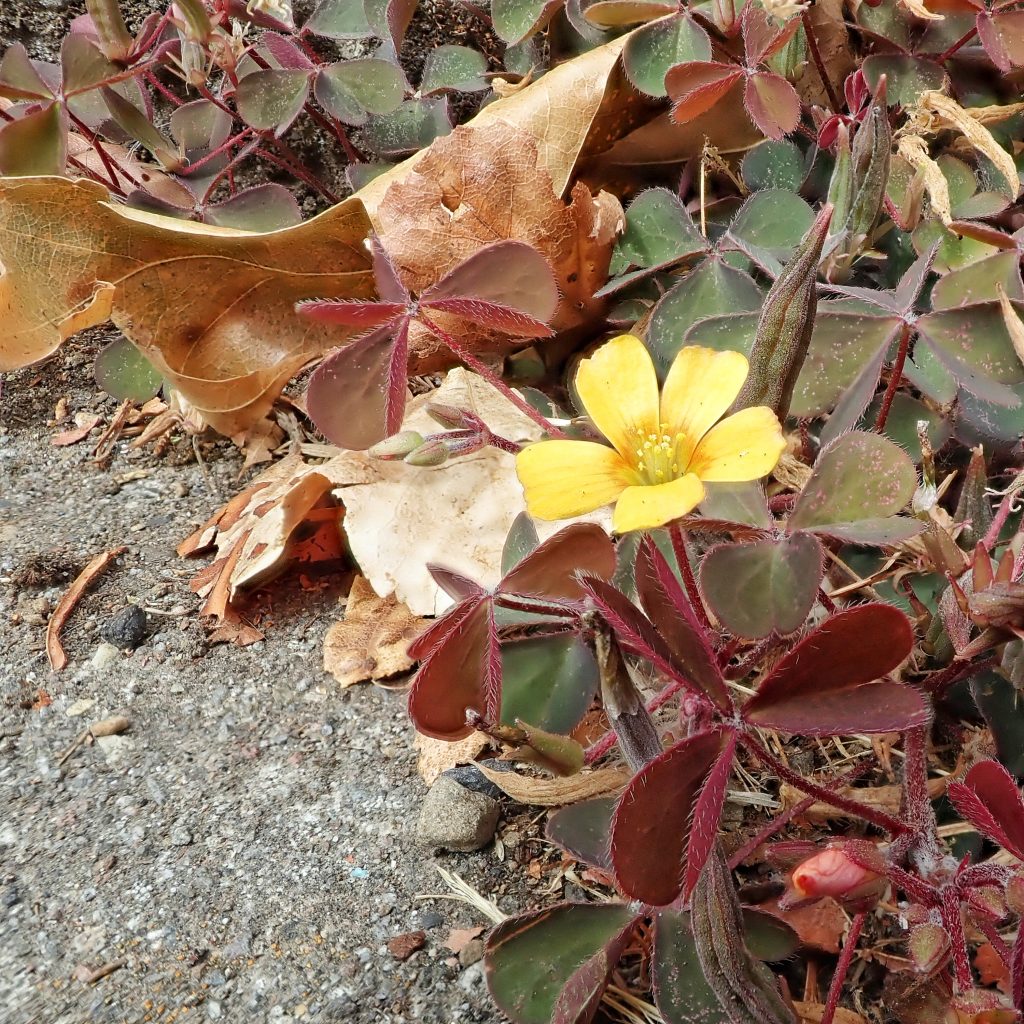
1 thought on “Oxalis corniculata (Creeping Yellow Wood Sorrel)”